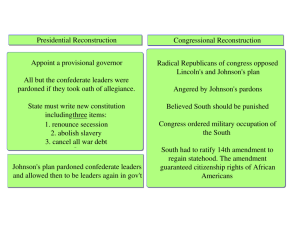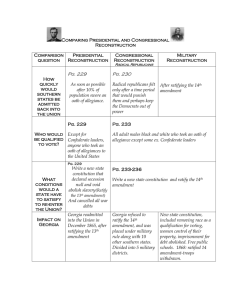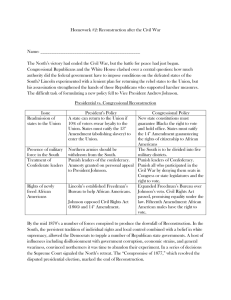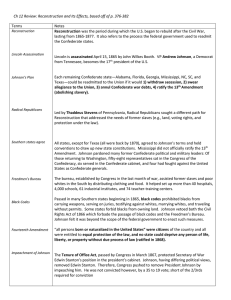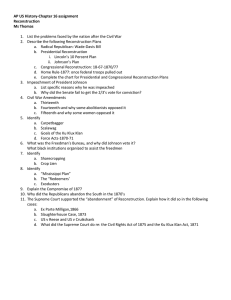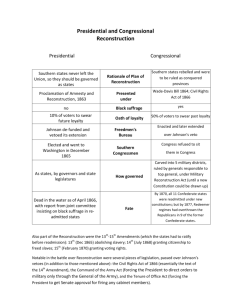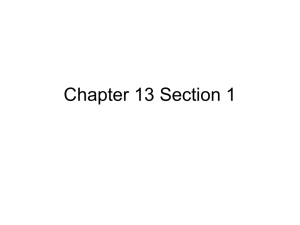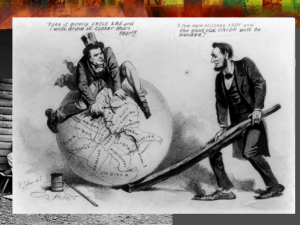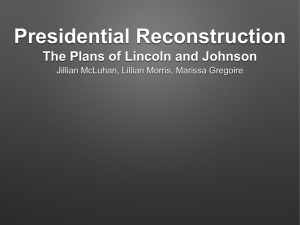File
advertisement
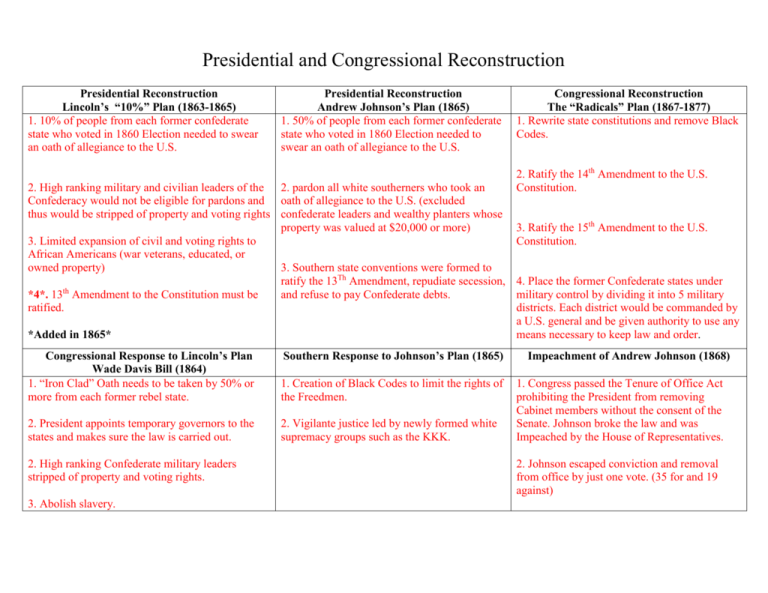
Presidential and Congressional Reconstruction Presidential Reconstruction Lincoln’s “10%” Plan (1863-1865) 1. 10% of people from each former confederate state who voted in 1860 Election needed to swear an oath of allegiance to the U.S. Presidential Reconstruction Andrew Johnson’s Plan (1865) 1. 50% of people from each former confederate state who voted in 1860 Election needed to swear an oath of allegiance to the U.S. 2. High ranking military and civilian leaders of the 2. pardon all white southerners who took an Confederacy would not be eligible for pardons and oath of allegiance to the U.S. (excluded thus would be stripped of property and voting rights confederate leaders and wealthy planters whose property was valued at $20,000 or more) 3. Limited expansion of civil and voting rights to African Americans (war veterans, educated, or owned property) 3. Southern state conventions were formed to ratify the 13Th Amendment, repudiate secession, th *4*. 13 Amendment to the Constitution must be and refuse to pay Confederate debts. ratified. *Added in 1865* Congressional Response to Lincoln’s Plan Wade Davis Bill (1864) 1. “Iron Clad” Oath needs to be taken by 50% or more from each former rebel state. 1. Creation of Black Codes to limit the rights of the Freedmen. 2. President appoints temporary governors to the states and makes sure the law is carried out. 2. Vigilante justice led by newly formed white supremacy groups such as the KKK. 2. High ranking Confederate military leaders stripped of property and voting rights. 3. Abolish slavery. Southern Response to Johnson’s Plan (1865) Congressional Reconstruction The “Radicals” Plan (1867-1877) 1. Rewrite state constitutions and remove Black Codes. 2. Ratify the 14th Amendment to the U.S. Constitution. 3. Ratify the 15th Amendment to the U.S. Constitution. 4. Place the former Confederate states under military control by dividing it into 5 military districts. Each district would be commanded by a U.S. general and be given authority to use any means necessary to keep law and order. Impeachment of Andrew Johnson (1868) 1. Congress passed the Tenure of Office Act prohibiting the President from removing Cabinet members without the consent of the Senate. Johnson broke the law and was Impeached by the House of Representatives. 2. Johnson escaped conviction and removal from office by just one vote. (35 for and 19 against)
